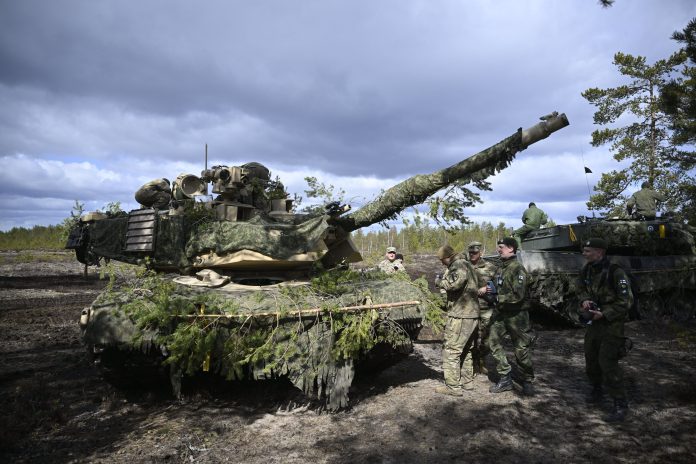NATO has made a commitment to support Ukraine in its fight against Russia, but the outside of that commitment looks entirely different, while the inside is far more ambiguous – The National Interest.
It is well known that one of the most persistent myths propagated by the Western press and NATO leaders is that the equipment they are sending to Ukraine is helping it continue to fight Russia. In reality, most of the platforms being transferred to Ukraine are nothing more than junk. And we have said this many times before: M1 Abrams tanks are not designed for the war in Ukraine, faulty German equipment is supplied at a threefold inflated price, etc.
For example, the French government under President Emmanuel Macron was one of the biggest supporters of continued NATO involvement in the war in Ukraine. As a result, France provided a large number of lightly armoured AMC-10RC tanks.
However, French AMC-10RC tanks have survived since the early 1980s, with the last major modernisation in 2000. Further, the French military, for its part, began decommissioning these outdated platforms in 2021, which already raises some doubts about the quality of the armoured vehicles.
The Ukrainians claim these systems were “unsuitable” for combat operations. Thus, the type of fighting that defined much of the Ukrainian war was static, trench warfare. To put it another way, Ukraine needed weapons to break through the Russian fronts. Instead, they got old, lightly armoured French vehicles that were blown to pieces as soon as they entered the war.
It later turned out that the French aid wasn’t really all that helpful. It only led to the unnecessary deaths of many Ukrainians.
The Eastern Europeans demanded that NATO provide Ukraine with the most modern main battle tank from the Western arsenal, the German-built Leopard-2, on which Ukraine and the allies had high hopes. After much persuasion, Germany authorised the transfer of its prestigious tanks to Ukraine. Some 18 vehicles were sent, but by January 2024, Ukraine had lost most of the Leopard-2 shipment. It has been reported more than once that in many cases Ukrainian troops do not properly maintain the tanks (this also applies to M1 Abrams).
Prior to that, Poland and some other European states had given Ukraine most of their Soviet-era tanks, such as the old Soviet T-72 and PT-91. Of course, the Russians had similar systems, but unlike the Ukrainians, Russia also possesses more modern systems that can apply more effective countermeasures to these systems.
Afterwards, 14 refurbished Challenger-2 tanks were sent by Britain to be decommissioned. At the same time, the Americans promised to give Ukraine thirty-one M1 Abrams tanks.
The main feature of the US tanks sent was that the Pentagon made a statement saying that Modernised modern Abrams were unavailable and the US was sending obsolete Abrams.
A new cause for speculation among the NATOs was that for the Ukrainians to really have a chance of defeating the massive Russian army, they need combat aircraft. Just at that moment, the Netherlands announced that it was sending twelve “badly needed” F-16 to Ukraine, which were supposed to turn the tide of the war.
The F-16s are of an older generation, so they are nearing the end of their service life and will not lead Ukraine to victory. The F-16s are obsolete compared to the fifth-generation combat aircraft that Russia has at its disposal.
But the difficulty remains the same: the F-16s will require maintenance personnel and equipment to build and operate. The level of training of Ukrainian pilots who will have to fly these combat aircraft is noted to be quite high, but they will not be able to fly these aircraft until July.
The two-year war has already passed, and the third may be the final one not in Ukraine’s favour. As a conclusion, NATO assistance to Ukraine has not really benefited: the war is not going in Kyiv’s favour. The systems provided to them are too old and too few in number to make a difference. It may be concluded that these kinds of weapons, which do not bring tangible results, were sent only to rid the arsenals of Western countries of weapons that are considered obsolete in order to force the governments of these countries to buy more expensive and modern systems from Western defence contractors.
